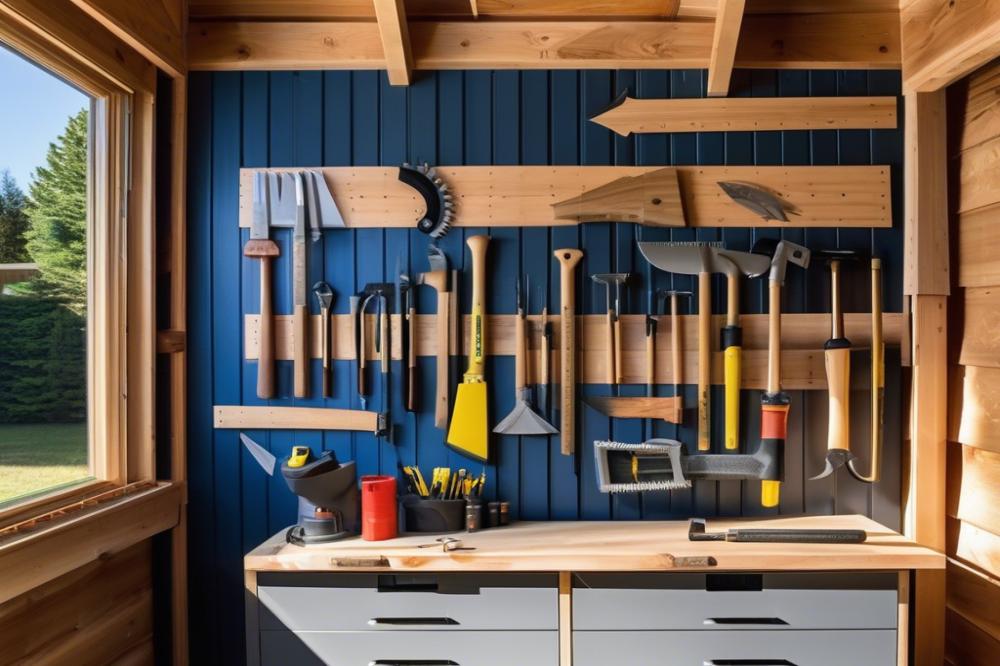Introduction
Creating a dedicated space for tools and machinery plays a vital role in effective farm operations. A well-constructed structure can make a significant difference in both organization and maintenance. When considering farm equipment storage, having a designated shed should be a top priority for any farmer.
Investing time and effort into a DIY shed offers numerous advantages. Proper outdoor storage prevents damage to valuable equipment, extending its lifespan. Additionally, a well-planned space improves accessibility. Locating tools in one area minimizes time wasted searching, allowing for smoother equipment maintenance and more efficient workdays.
Moving forward with shed plans requires careful thought and preparation. Take into account the shed design that best fits your needs, whether it’s a gardening shed or a more extensive farm shed for larger equipment. Choosing the right building materials will ensure durability and weather resistance. By prioritizing organization and planning, you can create effective storage solutions and maintain the tools you use most.
Understanding shed plans
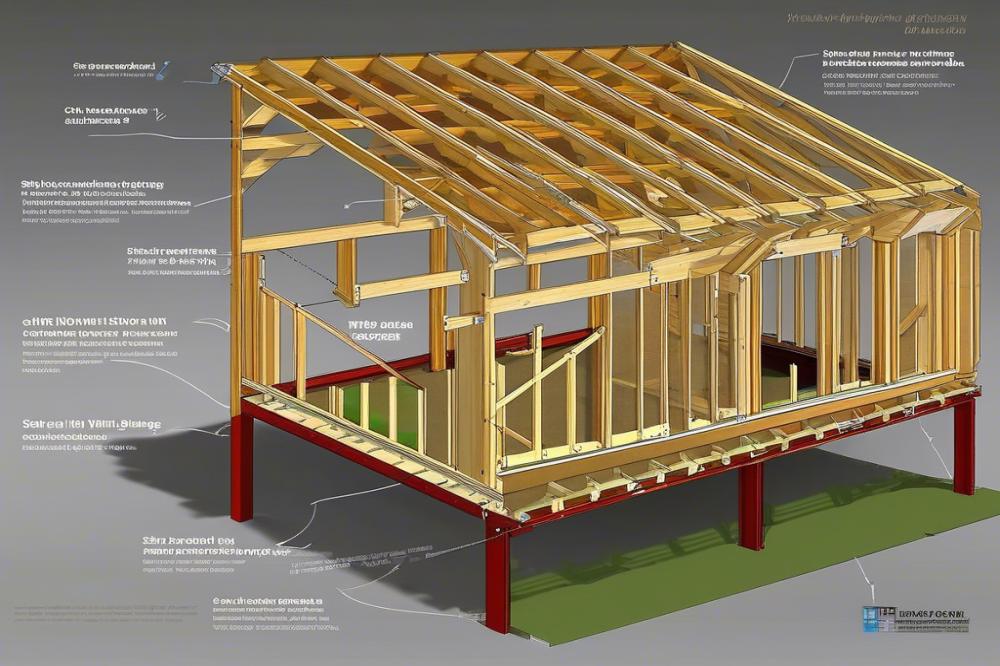
When thinking about a shed for storing farm equipment, proper shed design is key. Without a solid plan, the project can become difficult and frustrating. Good shed plans help organize your outdoor storage effectively. This is especially important on a farm where space can be limited and varied. The right design can make tasks easier and improve equipment maintenance.
Importance of Proper Shed Design for Farm Use
Farm sheds need to serve multiple purposes. They should keep tools safe, dry, and easy to access. A well-designed shed adapts to different farming needs. Consider the types of tools and equipment you use most often. Having a space specifically for tools storage can streamline your daily chores. For example, a designated area for gardening tools can save time when working on projects. With a thought-out design, you can increase productivity and reduce frustration.
Elements to Consider in Creating Effective Shed Plans
Begin with assessing the space available on your property. It is important to choose building materials that withstand the elements. Durability matters since farm equipment faces harsh conditions. Additionally, think about the shed’s layout. Deciding where to place shelves, racks, and workbenches is crucial. Maximizing the interior space makes the shed functional and user-friendly. Consider including features like windows for natural light and ventilation.
Ideas for Farm Shed Layouts
A few ideas can help inspire your plans. For instance, a corner shelving unit can store smaller gardening supplies efficiently. Consider building a wall-mounted tool rack to keep tools organized and off the floor. This not only saves space but also protects them from damage. An open area in the center might serve as a workbench for repairs or project tasks. With effective tools storage, you can keep everything in one place, making it simpler to find items.
Also, think about incorporating a gardening shed area. This could include potting benches and storage for soil and seeds. Organizing your gardening tools and supplies in a separate section keeps things tidy. Customizing your outdoor storage can lead to a personalized and efficient workspace.
Planning your farm shed with intention scores major points in efficiency. By focusing on what you need, you can create the best storage solutions for your farm setup. A little brainstorming goes a long way in achieving your goals. Always remember, a well-structured shed contributes significantly to a productive farming experience.
Selecting Building Materials
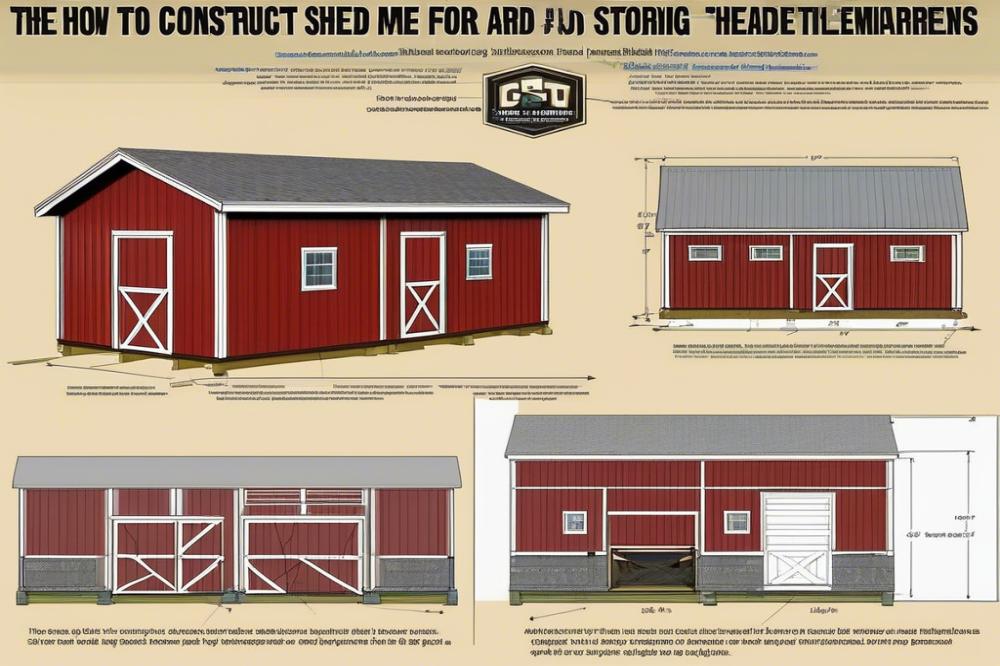
Choosing the right materials is important when building a shed for storing farm equipment. Depending on your needs, various materials can suit your project. Metal is often used for its strength and longevity. Steel buildings can resist harsh weather conditions well. Wooden frames provide a traditional look and blend easily into rural landscapes.
When considering durability, think about exposure to moisture and pests. Pressure-treated wood can help protect against rot if you opt for timber. Metal, while usually resistant to bugs and decay, may rust without proper treatment. Select materials that require low maintenance to keep your equipment in the best condition.
Don’t overlook cost when sourcing materials for your DIY shed. Local hardware stores often provide affordable options. Some people find recycling materials a good choice. Old pallets or reclaimed wood can be transformed into functional and stylish storage solutions. Online marketplaces also allow for easy price comparisons and can lead to budget-friendly choices.
Farm shed design should account for your specific storage needs. For instance, if you plan to store large equipment, reinforced materials may be necessary. If your gardening shed will house tools only, lighter materials might suffice. Always evaluate the options based on the type of equipment and how often you’ll use it.
Tools storage within the shed requires thoughtful organization. Shelving can be made from plywood, providing a sturdy surface for smaller items. Galvanized metal can also offer a rust-resistant shelving solution. Each choice you make directly affects the longevity of your shed and the ease of accessing your gear.
DIY shed construction
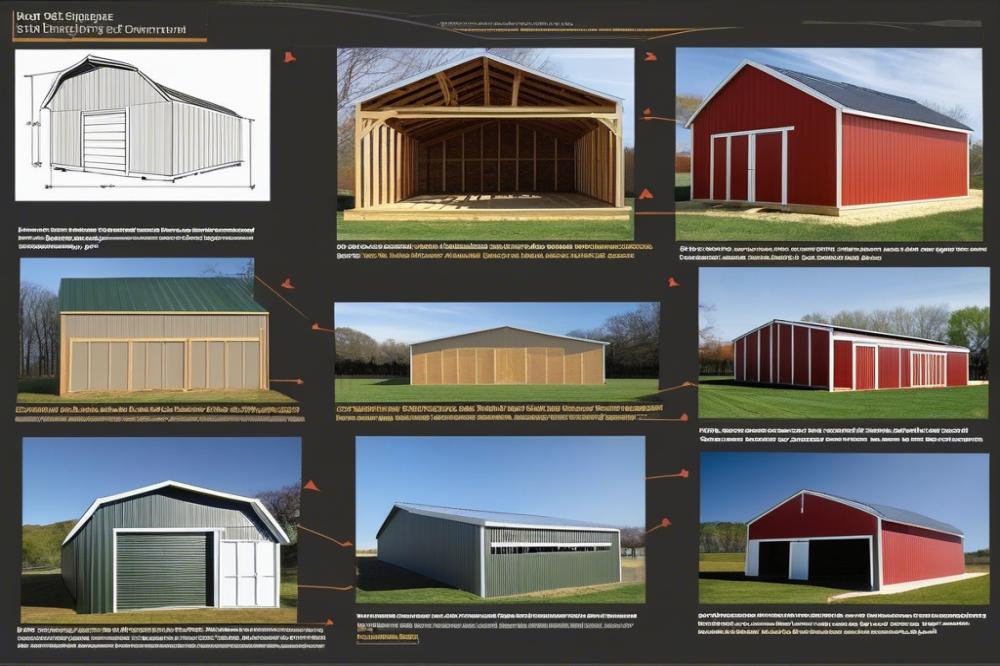
Building a shed for storing farm equipment can be a rewarding project. A DIY shed offers practical storage solutions while saving money. Start by gathering shed plans that fit your needs and space. Consider what equipment you will store. A simple design might be perfect for tools storage, while a larger space could accommodate gardening supplies as well.
Step-by-step guide to building a DIY shed for farm equipment
Begin with a solid foundation. Clear the area where you plan to build. Level the ground to provide stability. After that, lay concrete blocks or gravel to form the base. Next, construct the frame using lumber. Follow your shed plans carefully to shape the walls and roof accurately.
Once the frame is ready, attach plywood or other building materials to create walls. Ensure that the walls are vertical and secure. Now it’s time to focus on the roof. A slanted roof is practical for rain runoff. Cut and install roofing materials to protect your shed from the elements.
Adding doors and windows is the next step. Include these features for easy access and ventilation. With the exterior complete, consider painting or staining the wood. This will protect it from moisture and increase longevity. A fresh coat of paint can also improve appearance.
Essential tools and equipment required for construction
Gather the right tools before beginning construction. A saw will be necessary for cutting wood to size. Other useful tools include a hammer, screws, and a level. Measuring tape will help ensure accuracy at every step. Safety goggles are also vital to protect your eyes during work.
Other tools might include a drill for creating holes and securing beams. A wrench can help tighten various fittings you may use. Don’t overlook gloves to protect your hands while handling materials. Each tool adds to your overall effectiveness in building a sturdy farm shed.
Safety tips and best practices during the building process
Prioritize safety throughout the construction process. Always wear appropriate safety gear, including goggles and gloves. Keep the work area tidy to prevent tripping hazards. When using power tools, follow the manufacturer’s instructions carefully. Avoid distractions while operating equipment.
Consider the weather before starting. Extreme weather can make construction unsafe. If rain or wind is in the forecast, postpone your work. Assess your equipment regularly to ensure everything remains in good condition. Proper equipment maintenance is essential for effective and safe building.
Finally, never rush through tasks. Building a DIY shed is a big project, and taking your time will lead to better results. Measure twice and cut once to guarantee a perfect fit. Following these guidelines will ultimately help you build a safe and functional structure for all your outdoor storage needs.
Shed Design Features
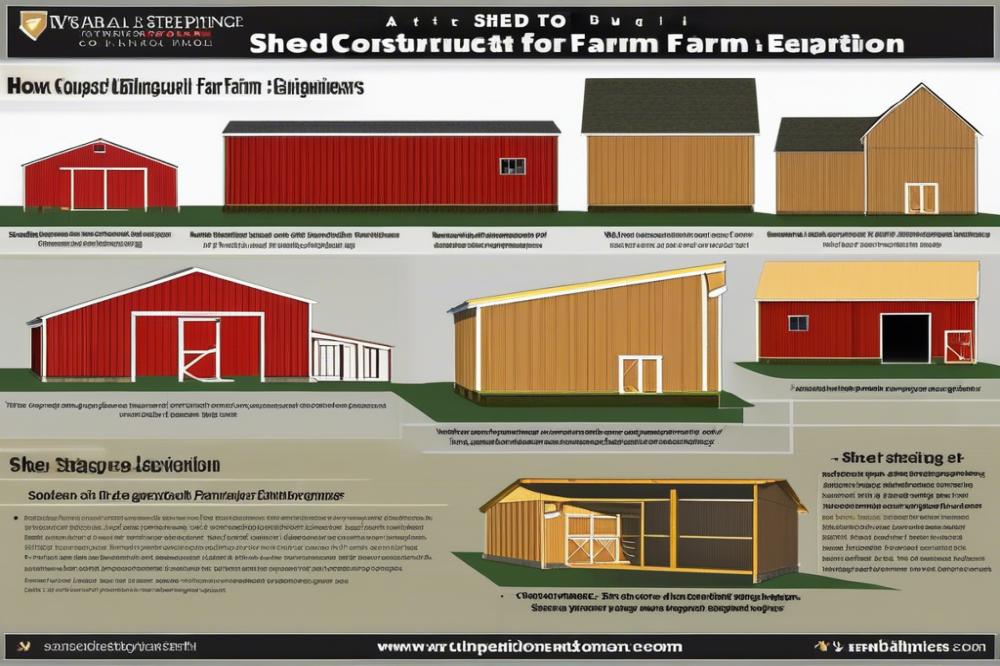
Optimal Features for a Farm Shed Focused on Equipment Maintenance
A well-designed farm shed can significantly affect equipment maintenance. Think about including durable building materials that resist wear and tear. Metal siding or treated wood offers longevity and durability. Creating adequate floor space is also essential for maneuvering around larger machinery. High-quality ramps can help with loading and unloading equipment efficiently.
Incorporating Ventilation, Lighting, and Accessibility in the Design
Proper ventilation is critical in an outdoor storage area. When air circulates well, moisture and odors dissipate more easily. Installing windows or vents can achieve this effectively. Natural light enhances visibility but artificial lighting is also necessary for evening tasks. Using LED lights is a smart choice; they last long and save energy. Furthermore, think about the layout to promote accessibility. A wide door allows larger items to enter without hassle. Paths should be clear and free of obstacles for safe movement.
Customizing Your Shed for Specific Storage Solutions, Including Gardening Tools
Tailoring your DIY shed to meet specific needs will result in better organization of materials. Designate areas for tools storage, including shelves and hooks for hanging smaller items. A gardening shed might benefit from a potting table or a designated spot for soil and fertilizer. For other types of farm equipment, consider built-in compartments to hold different tools. Labeling sections makes retrieval easier and helps keep everything orderly. Adapting your space not only improves efficiency but also preserves the life of your tools and equipment.
Final Considerations and Maintenance
Maintaining your farm shed is crucial for its longevity. Inspect the building regularly. Look for any signs of wear, like loose nails or damaged roofing. Cleaning out any debris helps prevent pests from making it their home. Regularly check the doors and locks to ensure they function properly. Keeping your shed safe and secure is very important. Regular maintenance not only prolongs the life of your structure, but it also saves money in the long run.
Essential Maintenance Tips for Longevity of Your Shed
Use quality building materials for the best results. Consider treating wooden surfaces to resist rot and decay. This simple step adds years to your shed’s life. Keeping the exterior painted or stained can also protect against the elements. Make sure the gutters are clear to allow water to drain away from the walls. Moisture can cause significant damage over time. A little effort in upkeep goes a long way.
How to Organize the Shed for Maximum Efficiency
Efficiency in your shed starts with smart organization. Use shelving units to store tools and materials off the floor. This frees up valuable space for your larger equipment. Hanging pegboards on the walls offers easy access to tools storage. Labeled bins can help keep smaller items organized and easy to find. Set aside designated areas for different categories, like gardening shed supplies and equipment maintenance items. Such organization saves time when you need to locate something quickly.
Planning for Future Expansion and Adaptability of Storage Space
Your shed should adapt as your needs change. When creating your shed plans, think about potential expansions. Leave space for new shelving or an extra workbench. Over time, you might acquire more farm tools or outdoor storage items. Planning for this growth now will make adjustments easier later. Being flexible with your shed design means you won’t need to start over when you want to invite new storage solutions into the mix.
Wrapping Up the Importance of a Reliable Shed
As we reflect on the significance of a well-built shed for farm equipment, it is clear that storage plays a central role in maintaining the longevity and functionality of machinery. Keeping tools, equipment, and supplies protected from the elements can save farmers countless hours and expenses in repairs. A sturdy structure provides security and accessibility, which helps streamline daily operations on the farm.
Farmers should feel encouraged to put their knowledge of shed plans into action. Constructing an effective storage space is not just a task; it is a valuable investment in future productivity. Learning about the materials and methods allows individuals to create a structure that suits their specific needs. Such hands-on projects can also foster a sense of pride and accomplishment within the agricultural community.
Final thoughts emphasize the importance of enhancing outdoor storage capabilities. Having a designated area for equipment reduces clutter, creating a safer working environment. Regular maintenance and organization can lead to improved efficiency and easier access to essential tools. Taking these steps toward better storage solutions will undoubtedly benefit farmers in their daily practices. Ultimately, a practical approach to building a shed can lead to success on the farm.



